
Dorothy Elizabeth Gish was an American stage and screen actress. Dorothy and her older sister Lillian Gish were major movie stars of the silent era. Dorothy also had great success on the stage, and was inducted into the American Theater Hall of Fame. Dorothy Gish was noted as a fine comedian, and many of her films were comedies.
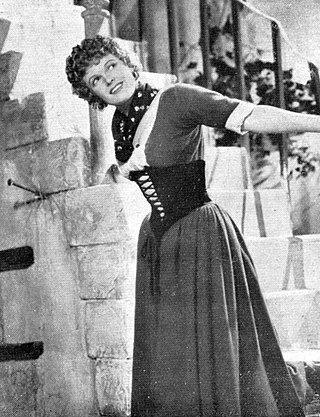
Dame Florence Marjorie Wilcox, known professionally as Anna Neagle, was an English stage and film actress, singer, and dancer.

Michael Charles Gauntlet Wilding was an English stage, television, and film actor. He is best known for a series of films he made with Anna Neagle; he also made two films with Alfred Hitchcock, Under Capricorn (1949) and Stage Fright (1950); and he guest starred on Hitchcock's TV show in 1963. He was married four times, including to Elizabeth Taylor, with whom he had two sons.
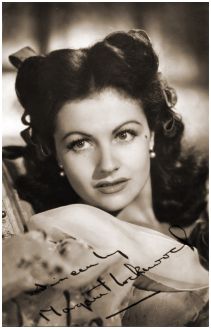
Margaret Mary Day Lockwood, CBE, was a British actress. One of Britain's most popular film stars of the 1930s and 1940s, her film appearances included The Lady Vanishes (1938), Night Train to Munich (1940), The Man in Grey (1943), and The Wicked Lady (1945). She was nominated for the BAFTA Award for Best British Actress for the 1955 film Cast a Dark Shadow. She also starred in the television series Justice (1971–74).

Herbert Sydney Wilcox CBE was a British film producer and director.

Dawn is a 1928 British silent war film directed by Herbert Wilcox and starring Sybil Thorndike, Gordon Craig, and Marie Ault. It was produced by Wilcox for his British & Dominions Film Corporation. The film was made at Cricklewood Studios with sets designed by Clifford Pember.
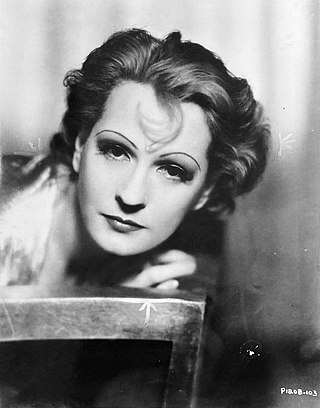
Juliette Compton was an American actress whose career began in the silent film era and concluded with That Hamilton Woman in 1941.
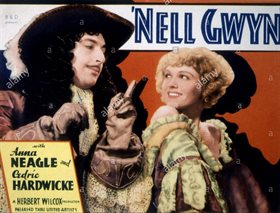
Nell Gwyn is a 1934 British historical drama film directed by Herbert Wilcox and starring Anna Neagle, Cedric Hardwicke, Jeanne de Casalis, Miles Malleson and Moore Marriott. The film portrays the historical romance between Charles II of England and the actress Nell Gwyn. In the opening credits, the dialogue is credited to "King Charles II, Samuel Pepys and Nell Gwyn" with additional dialogue by Miles Malleson. It was also released as Mistress Nell Gwyn.

Limelight is a 1936 British musical film directed by Herbert Wilcox and starring Arthur Tracy, Anna Neagle and Jane Winton. It was released in the U.S. as Backstage.

Maytime in Mayfair is a 1949 British musical romance film directed by Herbert Wilcox and starring Anna Neagle, Michael Wilding, Nicholas Phipps, and Tom Walls. It was a follow-up to Spring in Park Lane.
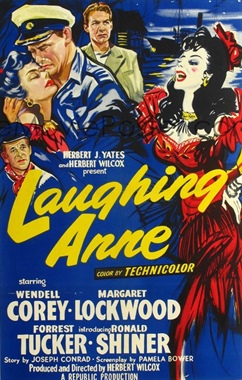
Laughing Anne is a 1953 British adventure film directed by Herbert Wilcox and starring Wendell Corey, Margaret Lockwood, Forrest Tucker, and Ronald Shiner. It was adapted from Joseph Conrad's short story, "Because of the Dollars" and from his 1923 two-act play, Laughing Anne. The film was shot at Shepperton Studios outside London. The film's sets were designed by the art director William C. Andrews and costumes were by Elizabeth Haffenden.

London is a 1926 British silent romantic drama film, directed by Herbert Wilcox and starring Dorothy Gish. The film was adapted by Wilcox from a short story by popular author Thomas Burke. The British Film Institute considers this to be a lost film.

Madame Pompadour is a 1927 British silent historical drama film directed by Herbert Wilcox and starring Dorothy Gish, Antonio Moreno and Nelson Keys. The film depicts the life of Madame de Pompadour, mistress of Louis XV of France. It was the first film to be shot at the newly christened Elstree Studios.

Peg of Old Drury is a 1935 British historical film directed by Herbert Wilcox and starring Anna Neagle, Cedric Hardwicke and Margaretta Scott. The film is a biopic of 18th century Irish actress Peg Woffington. It was based on the play Masks and Faces by Charles Reade and Tom Taylor. It contains passages of 18th century Shakespearian performance, from The Merchant of Venice, Richard III and As You Like It.

Chu-Chin-Chow is a 1923 British-German silent adventure film directed by Herbert Wilcox and starring Betty Blythe, Herbert Langley, and Randle Ayrton.

Tip Toes is a 1927 British silent film comedy-drama, directed by Herbert Wilcox and starring Dorothy Gish and Will Rogers. The film is a loose adaptation of the stage musical Tip-Toes, with the action transferred from Florida to London.
Nell Gwyn (1650–1687) was an actress and long-time mistress of King Charles II of England.
Sweet Nell of Old Drury is a 1911 Australian silent film directed by Raymond Longford starring Nellie Stewart about the relationship between Nell Gwynne and King Charles II. It is based on the 1900 play of the same name by Paul Kester which Stewart had performed numerous times on stage. It is considered a lost film.

Mistress Nell Gwyn is the title of the New York edition of an historical novel by the British writer Marjorie Bowen. The book was also published in London with the title Nell Gwyn: A Decoration. The book was first published in 1926.

Lilacs in the Spring is a 1954 British musical film directed by Herbert Wilcox and starring Anna Neagle, Errol Flynn and David Farrar. The film was made at Elstree Studios with sets designed by the art director William C. Andrews. Shot in Trucolor it was distributed in Britain by Republic Pictures. It was the first of two films Neagle and Flynn made together, the other being King's Rhapsody. It was released in the United States as Let's Make Up.


















